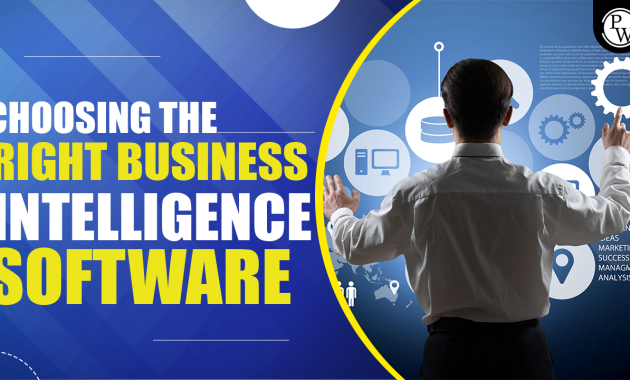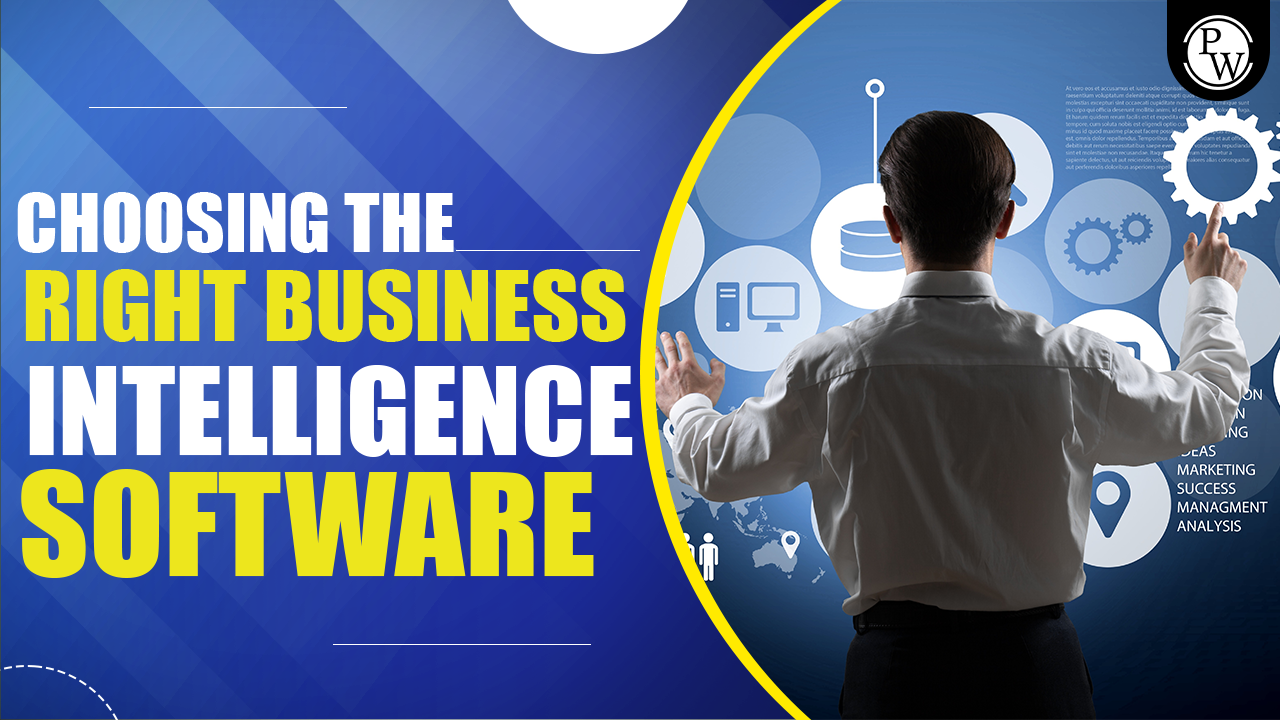
Insider Guide to Business Intelligence Software That Delivers Fast
In today’s data-driven world, businesses are drowning in information. The challenge isn’t a lack of data, but the ability to extract meaningful insights quickly. This is where Business Intelligence (BI) software steps in. This insider guide will explore BI software that delivers fast results, helping you make informed decisions with speed and accuracy. We’ll delve into the key features, benefits, and considerations when choosing the right BI tools for your needs. The focus will be on software that provides rapid analysis and actionable intelligence, allowing businesses to stay ahead of the curve.
Understanding the Need for Speed in Business Intelligence
The modern business environment demands agility. Market trends shift rapidly, and competitors are constantly evolving. Businesses that can quickly analyze data, identify opportunities, and respond effectively have a significant advantage. Traditional BI processes, often involving complex data warehousing and lengthy report generation cycles, can be too slow. BI software that delivers fast results is crucial for several reasons:
- Faster Decision-Making: Rapid access to insights allows for quicker, more informed decisions.
- Improved Responsiveness: Businesses can react swiftly to market changes and customer needs.
- Competitive Advantage: Speed enables businesses to identify and capitalize on opportunities before competitors.
- Increased Efficiency: Automated reporting and analysis tools free up valuable time for strategic initiatives.
The need for speed is paramount. It’s no longer sufficient to simply collect and store data; businesses must be able to analyze it quickly and efficiently. This requires BI software designed for rapid data processing and insightful reporting.
Key Features of Fast-Performing Business Intelligence Software
Several features contribute to the speed and efficiency of BI software. Understanding these features is essential when evaluating different solutions. Look for software that excels in the following areas:
Data Integration Capabilities
Effective data integration is the cornerstone of fast BI. The software must be able to connect to various data sources, including databases, cloud platforms, and spreadsheets. Look for features such as:
- Pre-built connectors: These simplify the process of connecting to common data sources.
- Data transformation tools: These tools help clean, transform, and prepare data for analysis.
- Real-time data ingestion: The ability to ingest data in real-time ensures that insights are always up-to-date.
Robust data integration minimizes the time spent on data preparation, allowing for quicker analysis.
Rapid Data Processing and Analysis
The core of fast BI lies in its ability to process and analyze large datasets quickly. Key features include:
- In-memory processing: This allows data to be analyzed directly in memory, significantly accelerating processing speeds.
- Optimized query engines: These engines are designed to execute complex queries efficiently.
- Advanced analytics capabilities: This includes features like predictive analytics and machine learning, which can provide deeper insights.
These features enable the software to deliver insights in a matter of seconds or minutes, rather than hours or days.
Intuitive User Interface and Visualization
A user-friendly interface is crucial for both speed and efficiency. The software should be easy to navigate and provide clear visualizations. Look for:
- Drag-and-drop functionality: This simplifies the creation of reports and dashboards.
- Interactive dashboards: These allow users to explore data and drill down into details.
- Customizable reports: The ability to create tailored reports that meet specific needs.
An intuitive interface empowers users to quickly find the information they need.
Benefits of Choosing Fast Business Intelligence Software
Investing in BI software that delivers fast results provides numerous benefits, including:
Improved Decision-Making
Quick access to insights enables faster and more informed decisions. This can lead to better outcomes in areas such as sales, marketing, and operations. Decisions can be made with the most current data. This can lead to improved profitability.
Increased Efficiency
Automated reporting and analysis tools streamline workflows and reduce the time spent on manual tasks. This frees up employees to focus on strategic initiatives. This can lead to higher levels of productivity.
Enhanced Competitive Advantage
The ability to quickly analyze data and identify opportunities allows businesses to stay ahead of the competition. This enables them to respond to market changes rapidly. This can result in increased market share.
Better Customer Understanding
BI software can provide valuable insights into customer behavior and preferences. This allows businesses to tailor their products and services to meet customer needs. This can lead to increased customer satisfaction.
Evaluating Business Intelligence Software: Key Considerations
Choosing the right BI software is a critical decision. Several factors should be considered during the evaluation process:
Scalability
The software should be able to handle increasing data volumes and user demands as the business grows. Make sure the software can accommodate this growth. Consider the future data needs.
Integration with Existing Systems
The software should seamlessly integrate with existing systems, such as CRM, ERP, and marketing automation platforms. This ensures that data can be easily shared and analyzed. Consider the current IT infrastructure.
Ease of Use
The software should be user-friendly, even for users without technical expertise. This will ensure that all employees can access and understand the data. Look for intuitive interfaces and helpful tutorials.
Cost
Consider the total cost of ownership, including licensing fees, implementation costs, and ongoing maintenance. Evaluate the value that the software provides. Consider the budget constraints.
Vendor Reputation and Support
Choose a vendor with a strong reputation and a proven track record of providing excellent support. This ensures that you receive timely assistance when needed. Research the vendor’s customer reviews.
Examples of Business Intelligence Software That Delivers Fast Results
Several BI software solutions excel in delivering fast results. Here are a few examples:
Tableau
Tableau is a popular BI tool known for its intuitive interface and powerful data visualization capabilities. It offers fast data processing and a wide range of connectors. Tableau is designed for speed and ease of use.
Power BI
Power BI, from Microsoft, is a cost-effective solution that integrates seamlessly with other Microsoft products. It offers fast data processing and interactive dashboards. Power BI is a powerful BI tool.
Qlik Sense
Qlik Sense is known for its associative engine, which allows users to explore data in new and insightful ways. It offers fast data processing and advanced analytics. Qlik Sense is a great option for speed.
These are just a few examples, and the best choice will depend on your specific needs and requirements. Consider the features and benefits of each solution. Make sure the software fits your specific needs.
Implementing Business Intelligence Software for Optimal Speed
Successful implementation is key to realizing the benefits of fast BI software. Follow these best practices:
Define Clear Objectives
Before implementing the software, clearly define your business objectives and the specific insights you need to gain. This helps focus the implementation process. Determine the key performance indicators (KPIs). Define the goals before starting.
Plan for Data Integration
Develop a comprehensive plan for data integration, including identifying data sources, cleaning and transforming data, and establishing data pipelines. Ensure a smooth flow of data. Plan for potential integration issues.
Train Your Team
Provide adequate training to your team to ensure they can effectively use the software and interpret the results. This maximizes the value of the investment. Offer ongoing training and support. Encourage user adoption.
Monitor and Optimize Performance
Regularly monitor the performance of the software and optimize it as needed to ensure it continues to deliver fast results. Identify any bottlenecks. Optimize queries and dashboards. Ensure smooth performance.
The Future of Business Intelligence: Speed and Beyond
The future of BI is focused on speed, but also on other key aspects:
Artificial Intelligence (AI) and Machine Learning (ML)
AI and ML are playing an increasingly important role in BI, automating data analysis, providing predictive insights, and uncovering hidden patterns. The use of AI is increasing. The value of AI is undeniable.
Self-Service BI
Self-service BI tools empower business users to access and analyze data without relying on IT or data scientists. This speeds up the decision-making process. These tools are becoming more popular.
Cloud-Based Solutions
Cloud-based BI solutions offer scalability, flexibility, and cost-effectiveness. These solutions are quickly becoming the standard. They offer numerous benefits.
As BI continues to evolve, the focus on speed will remain a critical factor. Businesses that embrace these trends will be well-positioned to thrive in the data-driven landscape. They will gain a competitive advantage. They will make better decisions.
Conclusion: Embracing Speed in Business Intelligence
Choosing BI software that delivers fast results is no longer optional; it’s a necessity for businesses that want to succeed. By understanding the key features, benefits, and considerations outlined in this guide, you can make an informed decision and select the right tools to empower your team. Embrace the power of fast BI. Make data-driven decisions. Drive business success.
[See also: The Importance of Data Visualization in Business, How to Choose the Right BI Tool, Data Integration Best Practices]

